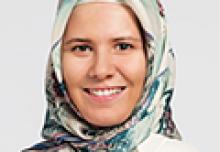SAN DIEGO—Chronic daily headache is common in younger children and manifests with similar characteristics as it does among older children, according to research presented at the 58th Annual Scientific Meeting of the American Headache Society. Because younger children often present for evaluation later in the disease process, compared with older children, earlier diagnosis would decrease morbidity significantly. Greater effort is needed to decrease medication overuse and school absenteeism, which contribute to headache chronification, said Emine Tunc, MD, research scholar at the Cleveland Clinic Foundation.
To increase the awareness of chronic headache among children between ages 3 and 11, Dr. Tunc and colleagues performed a literature review. The group identified 29 articles that examined the prevalence and characteristics of chronic daily headache in children. Six of them included information specific to younger children.
Dr. Tunc and her colleague A. David Rothner, MD, a child neurologist at the Cleveland Clinic, also reviewed the charts of patients who presented to the Cleveland Clinic's headache clinic for evaluation between May 2014 and May 2015. They defined chronic daily headache as more than 15 days of headache per month for at least two months and excluded patients with secondary headache disorders.
Pediatric Incidence of Chronic Daily Headache
The mean frequency of chronic daily headache in children and adolescents reported in the literature ranged from 8% to 30%, with a weighted mean of 23%. Between 28% and 56% of patients in the literature were younger than 12. Dr. Tunc and colleagues identified 327 patients with primary headache in their chart review. Of those patients, 57% had chronic daily headache. Approximately 28% of patients with chronic daily headache were younger than 12. The most common type of chronic daily headache was chronic migraine (a combination of migraine and tension-type headaches).
In the literature review and in the chart review, the male-to-female ratio was 1:2 among older patients (ie, between ages 11 and 18), which is similar to the ratio among adults, and 1:1 among younger patients (ie, ages 3 to 11). "This follows the concept that males develop headaches earlier than females, and later on, females [predominate]," said Dr. Tunc.
Younger Children Present Later in the Disease Process
The most interesting finding, she added, was that younger patients had greater duration of illness before initial evaluation, compared with older patients. One possible explanation for this finding is that children younger than 11 may not be articulate enough to state that they are having a headache, or parents may misinterpret signs and symptoms of headaches (eg, cessation of play and retreat to a dark, quiet room). In addition, parents may doubt that their young children are having headaches and may ignore them.
The chart review also showed that 61% of younger children and 52% of older children had medication overuse. "This difference between younger and older children is not statistically significant, but we were not expecting to see this at all," said Dr. Tunc. "One possible explanation, which we come across most commonly, is that parents are eager to stop the pain of little ones, but they are less concerned in older children. But the information that they are lacking is that pain killers themselves can initiate headaches."
About 38% of younger patients and 59% of older patients underwent brain MRI. All MRI results were within normal limits. "This proves to us that if there is no neurologic symptom and the physical exam is not concerning for underlying neurologic diseases such as tumor or increased CSF, MRI is not going to help us to diagnose these patients," said Dr. Tunc. "A comprehensive history and a really good physical exam will help us to diagnose these patients without an MRI."
Finally, the investigators observed that 30% of younger patients and 41% of older patients had excessive school absences, which they defined as missing more than 10 full days of school in the previous three months. "This school absenteeism is not only a result of the headaches, but also contributes to the chronicity of the headaches and makes those headaches harder to treat," said Dr. Tunc.
"As a next step, we should find ways to share this information with the pediatricians," she continued. Pediatricians are the first physicians to see children with headache and should be able to provide early diagnosis, treatment, or at least refer patients to a headache specialist or child neurologist, Dr. Tunc concluded.
—Erik Greb


